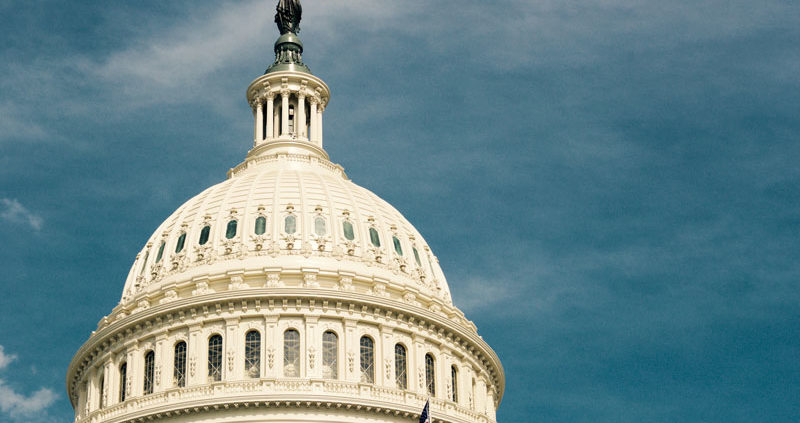The SECURE Act 2.0 Proposes Several Changes to How Americans Save for Retirement
The SECURE 2.0 Act aims to expand retirement savings options for Americans. It includes provisions such as increasing the age for required minimum distributions, allowing long-term, part-time employees to participate in 401(k) plans, and creating a new type of retirement account known as a “pooled employer plan,” which would allow small businesses to join together to offer retirement benefits to their employees. Additionally, the act would provide incentives for employers to automatically enroll employees in retirement plans and increase the maximum contribution limits for catch-up contributions.
The SECURE 2.0 act builds upon the original SECURE Act of 2019, which was aimed at improving retirement security and access to retirement plans for workers. Version 2.0 brings more than 90 new provisions to create and modify how americans save for retirement. The act has garnered bipartisan support and could potentially have a significant impact on retirement savings in the United States.
Here are a few key provisions outlined in the legislation:
Increased Catch Up Contributions (Starting Jan. 1, 2025)
The SECURE 2.0 Act proposes to increase the catch-up contribution limits for those aged 60 and over who have a 401(k) plan, an IRA, or a combination of both. The bill would increase the annual catch-up contribution limit to $10,000 for those aged 60 and over, up from the current limit of $6,500. Contribution amounts will be indexed to inflation starting in 2026. The catch-up contribution limit for those aged 50 to 59 would remain the same.
Tax Credits for Small Business Owners Offering or Establishing Retirement Plans (For plans starting in 2023)
The SECURE 2.0 act introduces tax credits for small business owners to encourage them to set up retirement plans for their employees. Under the new act, businesses with up to 50 employees will be eligible for a tax credit equal to 100% of the amount contributed by the employer, up to $1,000 per employee. The employer receives a tax credit equal to 100% for years one and two (this phases down over five years), 75% for year three, 50% for year four, and 25% for year five.
Small businesses with 51 to 100 employees are also eligible for this tax credit for those above 50 employees and those earning less than $100,000 per year. Additionally, for up to 50 employees, the current three-year start-up credit, which is currently equal to 50% of plan expenses, with up to a $5,000 cap, is increased to 100%. These tax credits are designed to make it more affordable for small businesses to offer retirement plans to their employees and encourage them to start saving for retirement.
Auto-enrollment and expansion of 401(k)s and IRAs (Starting Dec. 31, 2024)
The SECURE 2.0 Act aims to expand access to retirement savings plans, particularly for small businesses and lower-income workers, by encouraging the use of auto-enrollment in 401(k) plans and expanding eligibility for IRA contributions. It also proposes some options for emergency savings accounts.
Increased age for required minimum distributions (RMDs)
Currently, individuals must start taking RMDs from their retirement accounts at age 72. The SECURE 2.0 Act proposes increasing this age to 73 in 2023, and gradually increasing it to age 75 by 2033. Furthermore, the penalties for failing to take an RMD will decrease to 25% of the RMD amount, and to only 10% if quickly corrected.
ROTH 401k plans and other employer-sponsored plans will be exempt from RMDs beginning in 2024.
Changes to Inherited IRAs & RMDs
IRAs inherited from someone who died on or after Jan. 1, 2020 will generally be subject to new SECURE Act rules. Specifically, non-spouse beneficiaries of inherited retirement accounts will be required to withdraw the entire account balance within 10 years of the original owner’s death, rather than spreading the withdrawals out over their own lifetimes. The new rules do not apply to surviving spouses, minor children, or beneficiaries who are no more than 10 years younger than the original account owner. If a decedent is RMD age, then there are RMDs required each year 1-9 then a final payout in year 10. If the decedent was under RMD age, then no RMDs are required and the inherited assets need to be fully paid out by the 10th year after death.
Student Loan Assistance (Starting in 2024)
One of the proposed changes is to allow 529 education savings plans to be used to pay for certain student loan payments. This would apply to the principal and interest payments of qualified education loans, up to a lifetime limit of $10,000 per individual. Another proposed change is to allow employers to make matching contributions to 401(k) plans for employees who make student loan payments. This would give employees the ability to continue saving for retirement while paying off their student loans. Additionally, the bill would make student loan payments made by employers on behalf of employees tax-free up to a certain amount.
Changes to SIMPLE Contributions
The SECURE 2.0 act proposed changes to the SIMPLE IRA contribution limits. Currently, the contribution limit is $13,500 with a $3,000 catch-up contribution for those 50 and older. Under the proposed changes, the contribution limit would increase to $15,500, and the catch-up contribution would increase to $5,000 (tax year 2025.)
The act also proposes to allow contributions beginning in tax year 2024 to be contributed as post-tax ROTH contributions.
Expanded eligibility for multiple employer plans (MEPs)
The SECURE 2.0 Act would make it easier for small businesses to join MEPs, which allow multiple employers to participate in a single retirement plan. This would make it more cost-effective for small businesses to offer retirement benefits to their employees.
Changes to annuities in retirement plans (Sometime in the next 18 months)
The SECURE 2.0 Act would make it easier for retirement plans to offer annuities, which provide a stream of income in retirement. This includes providing safe harbor provisions for plan sponsors who choose an annuity provider and allowing plan participants to transfer their annuity investment to another plan without penalties.
Unused or Excess 529 assets Rolled Over into Roth IRAs (Starting in 2024)
If you have unused 529 Assets in a 529-qualified tuition program will be eligible for a tax-free distribution to a Roth IRA. Distribution is subject to the lesser of (a) the regular Roth IRA limits (without the income limits) or (b) the aggregate amount contributed to the 529 accounts over the previous five years (plus earnings). The beneficiary must be the same and funds being rolled to a ROTH must have been maintained in the 529 for at least 15 years. There is also a per-beneficiary lifetime rollover limit of $35,000, an annual rollover limit tied to the Annual IRA contribution limit, and the beneficiary can only rollover the limited dollar amount if they have earned income.
Steve Booren is the Owner and Founder of Prosperion Financial Advisors, located in Greenwood Village, Colo. He is the author of Blind Spots: The Mental Mistakes Investors Make and Intelligent Investing: Your Guide to a Growing Retirement Income and a regular columnist in The Denver Post. He was recently named a Barron’s Top Financial Advisor and recognized as a Forbes Top Wealth Advisor in Colorado.










